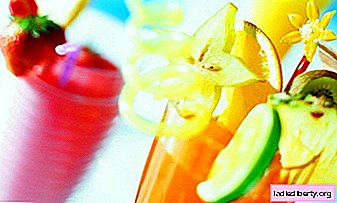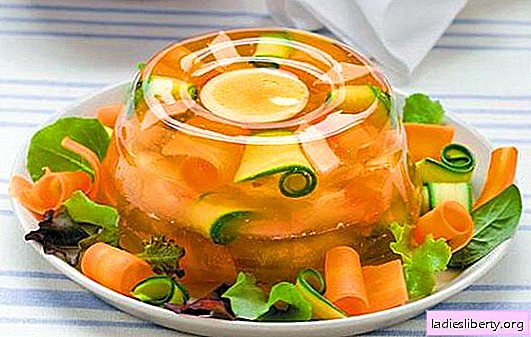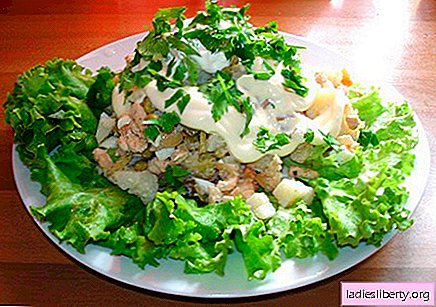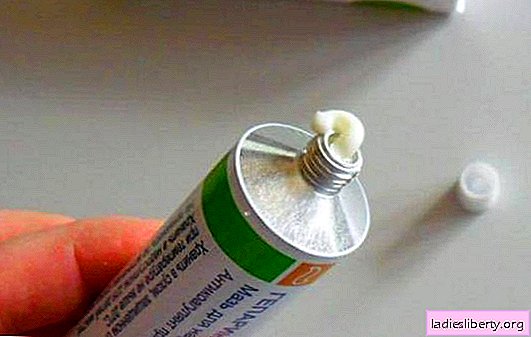
The human body is a complex biochemical system. Everything in it is in constant motion and is changing. But, one way or another, the processes of the body are always in dynamic equilibrium. Especially true is said for a person who has recently been born. Pregnancy, childbirth and everything connected with them are still covered with a halo of superstitious mystery. Meanwhile, newly minted mothers are worried about their child’s health issues.
One of the possible questions that parents ask is about increased bilirubin in the newborn.
It should be noted that in all newborns, bilirubin is elevated and not always the cause of any pathology.
To understand the problem, you first need to find out what is bilirubin, and then determine what are the causes of its increase in newborns.
What is bilirubin and does its increase in a newborn always indicate problems?
Bilirubin It is a special substance, a pigment of bile, which is formed as a result of the breakdown of protein substances. The concentration of this pigment in the blood reflects the work of the liver. However, an increase in bilirubin levels does not always indicate pathologies in newborns. The thing is that while the baby was inside the womb, the unborn person could not breathe independently. Intrauterine cellular respiration occurs through blood. After birth, excess hemoglobin begins to be utilized by the liver and, as a result, excess bilirubin is produced. This condition lasts from several weeks to several months. If bilirubin does not decrease, this is the basis for suspicion of the presence of certain diseases.
However, this is not an axiom. Bilirubin may be excreted even more slowly if one of the following factors exists:
• Prematurity. In premature babies, bilirubin decreases more slowly, and medical attention is often required to lower it.
• The presence of a catarrhal disease in the mother of the child in the prenatal period.
• A history of maternal diabetes.
• Hypoxia (lack of oxygen) in a child.
• Asphyxia during childbirth.
In these cases, the so-called physiological jaundice develops, when the bilirubin pigment is carried with blood flow to the eyes, skin, etc.
Causes of increased bilirubin in newborns. Disease symptoms
There are many diseases that are the causes of increased bilirubin in newborns. In this case, they speak of a pathological increase in the pigment substance in the blood. One of the most likely causes of a pathological increase in the substance is all kinds of liver diseases. According to medical statistics, one in six newborns suffer from infectious liver lesions. Of the entire list presented, the probability of liver pathology is the highest. Symptoms of this condition are very pronounced:
• Pain syndrome. Based on data on older children, we can say that the pains are pulling, aching, dull. Localized in the right side. A child cannot speak, but his behavior is characteristic: he often presses his legs to his stomach, is naughty, cries, and can keep his hand pressed to his right side.
• Yellowing of the sclera and skin. It can be caused not only physiological, but also pathological jaundice. To make a diagnosis, you should pay attention to other symptoms.
• Increased liver size. It is determined by palpation.
• Unstable stools. Most often, we are talking about diarrhea, or an alternation of diarrhea and constipation.
• Change the color and nature of the chair. In liver diseases, the stool becomes similar to clay in consistency and has no color (white discolored stool).
With these symptoms, there is a high risk of liver pathology: it can be of infectious etiology, parasitic origin, etc. Only a doctor can figure this out after a diagnosis.
The next disease leading to an increase in bilirubin is obstructive jaundice. It occurs as a result of blockage of the biliary tract as a result of stenosis of the walls or as a result of obstruction with stones. In this case, the symptoms are very similar to the symptoms of an infectious liver lesion. It is simply impossible to differentiate them without instrumental diagnostics.
Cirrhosis of the liver. It is extremely rare in children. However, it is more malignant.
Bowel obstruction may cause a high concentration of bilirubin. In children, it occurs quite often (about 3% of infants suffer from obstruction).
The main symptom of intestinal obstruction at an early stage is pain. The child presses his legs to his stomach, constantly crying. At an early stage, it is easy to confuse obstruction with banal intestinal colic. A clear picture becomes only later, when other signs of obstruction are connected:
• Alternating constipation and diarrhea. In the end, persistent constipation forms.
• Bloating, flatulence due to the impossibility of a normal discharge of gases.
• In advanced cases of vomiting with blood and stool.
A chronic form is also possible, in which case the condition skillfully "mimics" under the usual constipation.
Diseases associated with hormonal disorders: from pituitary insufficiency to diabetes mellitus. At an early age, determining a specific disease is not so simple.
Internal bleeding of varying intensity can cause an increase in bilirubin in the newborn.
The next reason lies in autoimmune processes, during which red blood cells are destroyed.
In addition, some temporary pathological conditions can be triggered by the use of drugs used to accelerate the birth process in the mother.
The most informative are the first 4 days from the moment of birth. If feces become discolored, this is a clear sign of pathology of the liver and / or gall bladder.
Diagnosis of increased bilirubin in a newborn
Diagnostic measures for elevated bilirubin begin with a visit to the doctor. The first one to show the child is a pediatrician. He will conduct an initial examination and give the necessary direction to a specialized specialist - gastroenterologist or hematologist.
At the initial examination, the doctor asks questions about complaints. Parents must accurately and clearly tell what complaints are observed in the child, and how they are manifested. Next, a specialist gastroenterologist conducts a physical examination - palpates the affected organ (liver, intestines). Already at this stage, pathology can be suspected. The next stage is laboratory research. Among them:
• General blood analysis. It is prescribed for the purpose of determining leukocytosis, increasing ESR. These indicators give reason to suspect the inflammatory process.
• Blood test for bilirubin. Specialized analysis, assigned to evaluate the indicator.
In the future, resorting to instrumental research:
• An ultrasound of the liver and gastrointestinal tract is performed. This study provides an opportunity to visually assess the condition of the digestive system.
• MRI / CT, is prescribed in extreme cases, for example, with suspicion of obstruction of the biliary tract, etc. Usually enough ultrasound.
Based on these indicators, the doctor makes a diagnosis and prescribes appropriate treatment.
Increased bilirubin in a newborn, what should I do? Treatment
In the case of the physiological nature of increased bilirubin, the answer to the question of what to do with increased bilirubin in a newborn lies on the surface. No need to do anything. With a protracted process, exposure to an ultraviolet lamp is prescribed to accelerate it. In cases where the reason lies in impaired liver function, choleretic drugs are prescribed in the minimum dosage, as well as hepatoprotectors. In no case should you give drugs to your child without consulting a specialist. This is fraught.
In extreme cases (with bowel obstruction, with bile duct obstruction), urgent surgery is prescribed. But, fortunately, such situations are rare in medical practice.
An increase in bilirubin in newborns can be both natural and pathological. Only an experienced doctor can distinguish them based on these diagnostic measures.











